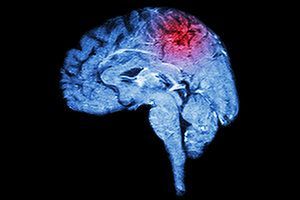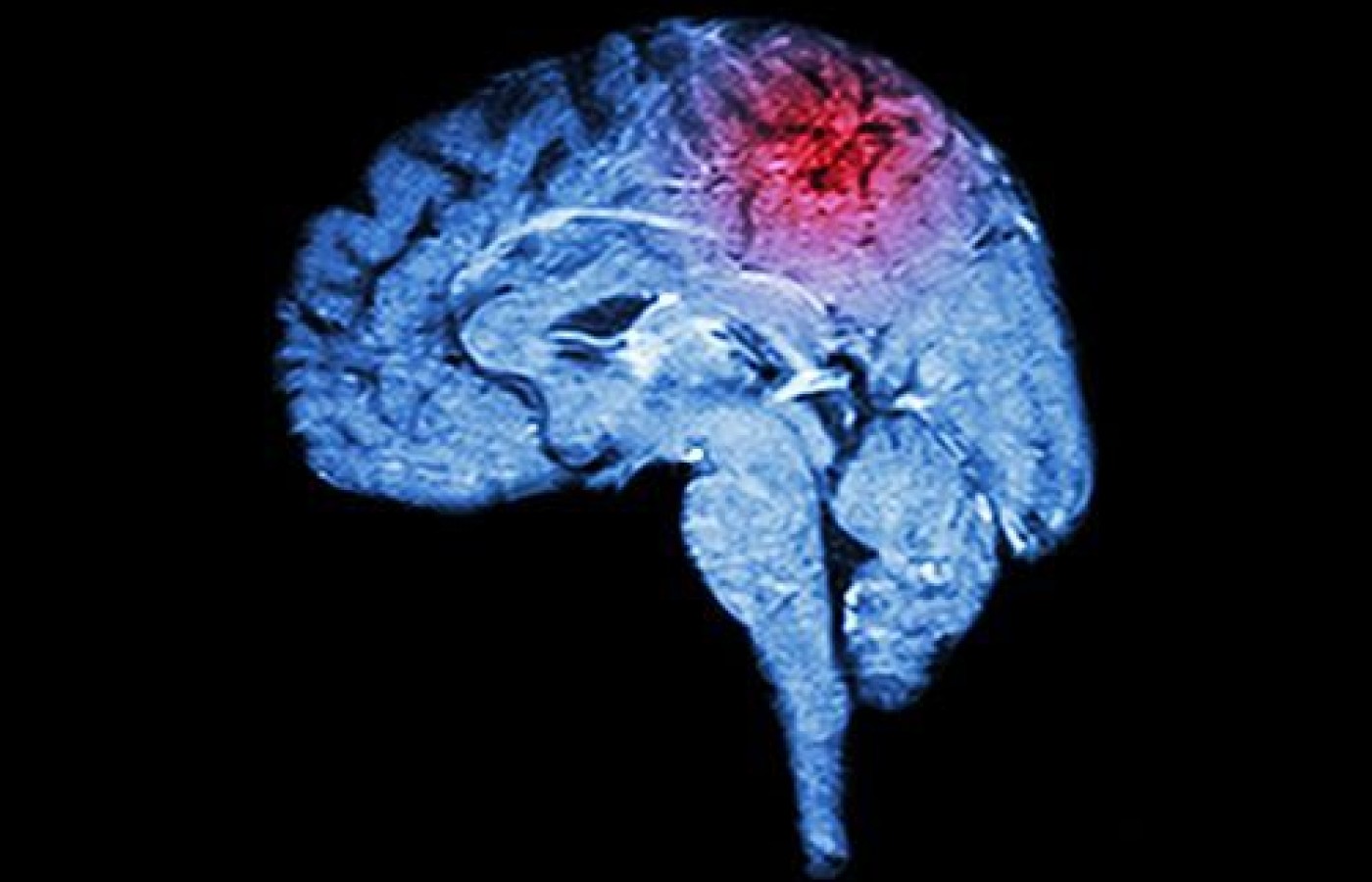Back pain? Blame the psoas. Seems as if everybody wants to dive headfirst into their psoas at the first sign of trouble with the lumbopelvic-hip region. Perhaps no other muscle is blamed more for causing problems than the psoas. Yes, it is an important stabilizer of the lumbar spine, but it shouldn't be the only one on which you focus. There is another big player on the scene: the iliacus.
Simple Screening Tests for Stroke and Other Brain Lesions
The drift test, arm rolling and finger rolling are three useful assessments in the identification of upper motor neuron dysfunction. The ability to identify dysfunction of this type is critical to all health care providers in the early diagnosis of patients who may be at elevated risk for an impending stroke or suffering from another brain lesion. Let's review the tests and how to perform them in less than a minute if necessary.
Drift, the most commonly known of these tests, is widely utilized by health care providers and lay people trained in basic life support and first-response techniques. Drift is part of the Cincinnati pre-hospital and FAST (Facial drooping, Arm weakness, Speech difficulties and Time) screening procedures designed for emergency use in the early detection of stroke.1-2 It is combined in both screening procedures with additional signs of facial drooping and speech difficulties. All three of these components are common signs in stroke victims.
The FAST screening procedure employs the additional component of time. This bonus component is attended to draw attention to the fact that obtaining appropriate care is of essence for patients experiencing a stroke.
For both screening procedures, if any single sign is present the patient should be considered to be experiencing a stroke until proven otherwise. Of the three signs from the procedures, facial drooping and speech difficulties are the easiest signs to identify. They are typically obvious and require minimal patient participation for detection.

It should be noted that lesions other than strokes can cause the signs listed in the Cincinnati and FAST screenings. Brain lesions causing higher-level motor dysfunction could also be due to injury, tumors, infections, etc. Bell's palsy effecting the seventh cranial nerve causes drooping of the face. (Bell's results in the entire side of the face drooping, while stroke usually causes drooping from the eyebrows down.)
The Drift Test
Drift is performed with the patient seated and the arms flexed at the shoulders by 90 degrees, the elbows fully extended and the hands supinated. The patient is then instructed to close their eyes and maintain the testing position for 15-30 seconds. Normally, the patient can maintain the testing position without deviation of the arms for the required time.
An abnormal response in drift testing is deviation of one arm from its initial position during the testing period. The deviation may be as simple as a hand moving from supination to pronation. More commonly, an arm may slowly "drift" downward and away (laterally) from the testing position.3
The upper motor lesion causing drift is typically located in the motor cortex of the contralateral side of the affected arm. An exception here is cerebellar lesions, which result in ipsilateral arm drift. In other words, the arm moves away from the side of the lesion for motor lesions of the cortex and toward the side of the lesion for lesions of the cerebellum.
When drift is observed, the direction the arm moves is important in helping localize the lesion. Three types of drift are common. In pyramidal drift, the hand pronates and the arm moves downward. In parietal drift, the arm moves upward and lateral. In cerebellar drift, the arm moves laterally and usually stays at the level of the testing position or moves slightly upward.3
The simultaneous occurrence of facial drooping and/or speech difficulties with drift would add to the confirmation and differential diagnosis of a stroke. Further confirmation or differential diagnosis can be obtained by the use of several other simple testing procedures; arm rolling and finger / thumb rolling.
Arm Rolling
This test is performed by having the patient flex the elbows to 90 degrees, placing the forearms parallel to each while making fists. The patient is then instructed to close their eyes and rotate the forearms around each other for 5-10 seconds. (The arm motion is the same motion used for the 1960s dance "The Egg Beater" and the 1970s dance "The Hustle.")4
Finger / Thumb Rolling
Finger rolling is performed in the same manner using the index fingers instead of the forearms. It can also be performed using the thumbs: "twiddling the thumbs." Normally, a patient can rotate the forearms, index fingers or thumbs around each other forward and/or backward without trouble. In a pathological situation, the affected arm / finger / thumb will remain somewhat stationary, while the uninvolved arm / finger / thumb will revolve around it like a satellite.
Identifying the side of the lesion is the same for the rolling tests as it is for drift. Cortical lesions affect the contralateral arm and cerebellar lesions affect the ipsilateral arm.
Further Testing and Test Prioritization
For further differentiation between lesions of the motor cortex and the cerebellum, coordination tests should be performed. Finger to nose, Romberg's and tandem walking tests are recommended.
While drift testing is a standard and was chosen for the Cincinnati Pre-hospital Screening and F.A.S.T. procedures, arm rolling is a more sensitive test. Along these same lines, finger rolling has been found to be more sensitive that arm rolling.5 Thumb rolling has been found to be more sensitive that finger rolling.6 With these facts in mind, it would be prudent for a clinician to begin with thumb rolling, the test most likely to rule out the presence of a lesion.
Clinical Relevance
The clinical relevance of the above information lies in the fact that patients seeking care for head and neck pain may be in the early stages of a vertebrobasilar stroke.7 Employment of the above procedures may help identify the impending stroke, helping the patient to receive appropriate and timely care, not to mention limiting the doctor's liability.
The phrase may help must be stressed here. The procedures are more reliable for detection during or after the stroke. However, efforts must be made to detect / rule out stroke upon entry in patients with head and neck pain. When combined, the tests take less than a minute to complete.
References
- Limmer D, O'Keefe MF. Emergency Care, 11th Edition. Upper Saddle River: Pearson, 2009.
- Stroke Warning Signs and Symptoms. American Heart Association / American Stroke Association.
- Campbell WW. Dejong's The Neurological Examination. Philadelphia: Lippincott, Williams and Wilkins, 2005.
- "How to Do the Hustle." YouTube: https://www.youtube.com/watch?v=FyC165yb8SM.
- Anderson EN. The forearm and finger rolling tests. Practical Neurology, 2010;10:39-42.
- Nowak DA. The thumb rolling test: a novel variant of the forearm rolling test. Can J Neurol Sci, 2011 Jan;38(1):129-32.
- Cassidy JD, et al. Risk of vertebrobasilar stroke and chiropractic care: results of a population-based case-control and case-crossover study. Eur Spine J, 2008;17 (Suppl 1):S176-S183.



